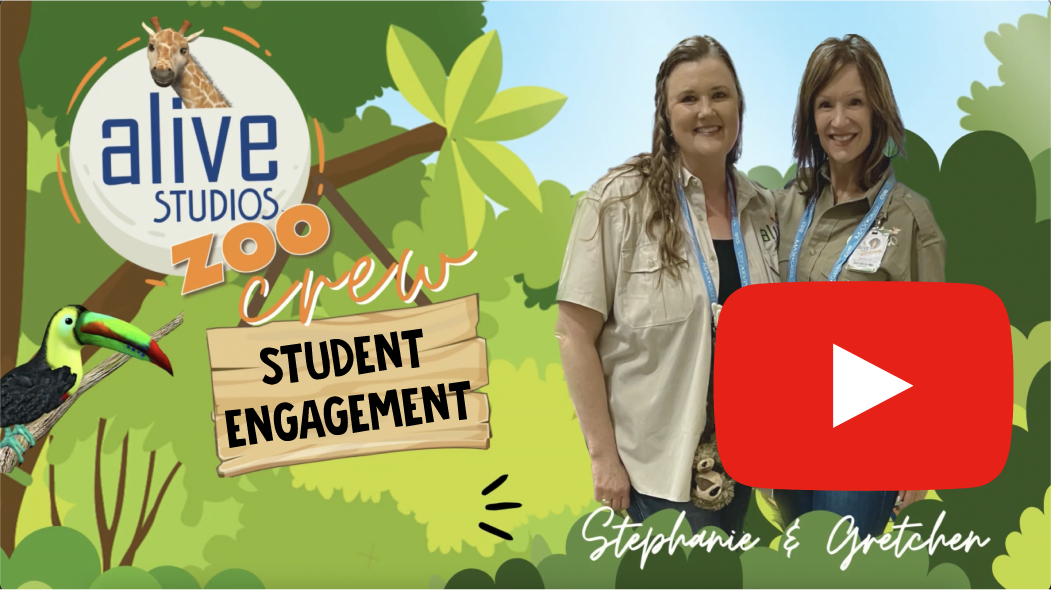Video length: 15:36
Includes history of student engagement

Stephanie Dowlearn and Gretchen Doll
Educational Consultants / Early Ed Teachers
Join Stephanie and Gretchen, two former early ed teachers, as they discuss five common challenges facing early education and take a deeper dive into student engagement. In this second episode, Stephanie and Gretchen walk through the history and importance of engagement and they leave you with practical solutions and resources for your classroom.
The 5 Early Education challenges that are being discussed in this VLOG series:
Early Literacy
Student Engagement
Math
Student Well-Being
Special Education
====================
<Outline and Partial Transcription:>
“Engagement in the Classroom: A Look Back and a Path Forward”
I. Introduction
A. Introduction of the topic of engagement in classrooms
B. Importance of engagement in learning
C. Overview of the history of engagement in American classrooms
II. The Evolution of Engagement in American Classrooms
A. The first speller and its limitations
B. McGuffey’s Reader and its impact
C. The effects of technology on engagement
III. The Challenges of Engagement in Modern Classrooms
A. The impact of technology on classroom engagement
B. Instant gratification and its effects on student engagement
C. The difficulty of engaging students during COVID-19
IV. The Future of Engagement in American Classrooms
A. The importance of social interaction and conversation
B. The role of technology in promoting engagement
C. Strategies for improving engagement in modern classrooms
V. Conclusion
A. Recap of the importance of engagement and its evolution
B. Discussion of the challenges and opportunities for improving engagement
C. Final thoughts and call to action for improving engagement in American classrooms.
Hi, I’m Stephanie, and I’m Gretchen. We’re with Alive Studios.
Today, we’re back to discuss the second challenging problem in classrooms across America, and that is engagement. According to an ED Week research survey, 70% of teachers said their students misbehave more now than before COVID. Engagement is so important because if they’re not engaged, they’re not learning.
One of the things that teachers are concerned about is how to improve engagement in classrooms. And that’s something that has been a question for a long time. But you know, our world has changed, and I think it’s good to look back at where schools started and what they started doing in America in the 1700s.
So, we will show you what engagement has looked like over the past 100 years. Well, since 1734, I believe, was the first one, Noah Webster wrote a speller and published it back in 1734. It was called something like the Grammar Institute of National Something. I don’t remember, but it was long, so if you can imagine being in a classroom, your kids would lose engagement by the time you got to the end of the name of that book, so they called it the Blue Book speller. It taught words, letters, and sounds. The stories were patriotic, and they were about citizenship. That was what kids started with. That was the very first speller in America. Then we got to McGuffey’s Reader, and it was more entertaining. It has lovely pictures and discusses phonics, which were letters, then words. It was a moral book. So the stories were Moral Stories, and that and the blue-backed reader were what American students had in the 1800s to 1900s.
Why is engagement different nowadays? That’s what we want to take a look at.
If you think about it, back in the day, that was what a schoolroom looked like; everybody was in rows, and you had certain textbooks. Then came along technology, and things changed. We have lots of fun things here that probably are like a walk down memory lane for some people who might be watching, and for some people, it might be pure history that you’ve only ever seen in a museum. That is not the case for me. I have been through them all. Oh, the Oregon Trail! Yeah, I remember playing that in elementary school.
There have been so many changes in technology from way back when until now. We have amazing computers, and right in our hands, we have phones that can do pretty much anything. Technology has changed, which has an effect, and that effect is huge. I’ve heard this, and you’ve heard this when we’re at conferences or when we’re at training.
Kids are no longer engaged because they are constantly staring at a screen. Everything is instant gratification, you know when they are watching TV or watching their videos and want their games to do something. They get instant gratification, and so as a teacher, when you’re in front of the classroom, trying to pull things out of them and trying to get them to listen. It has become harder and harder, especially since COVID. I had to do a song and a dance and my songs and my dances weren’t working anymore! We tried everything!
At home, kids have access to technology 24/7 if they want it. Unfortunately, when you go to the classroom, there is also a lot of screen time, and kids are being subjected to enormous amounts of technology at home in the classroom. People are hesitant to want to talk about bringing more technology into the classroom.
Well, and the reason is I think, of course, you hear all over the news that you know kids being on-screen time is not good if it’s all the time, and so parents and teachers don’t want their kids on the screen on screen all the time. They’re losing that social interaction they used to have; if you notice in these pictures and the ones before, they are isolated, and we need to engage children in conversations and social interaction.
How do you do that with technology?
You use it for a good reason and get kids talking again and working together. How do we do that, though? You know education has changed. The challenge of educating kids is already tough. But with all of our technology, things have evolved, and just like technology evolves, education has to constantly evolve to meet the needs of our students. I’ve been looking at different research. I found some interesting things you may already know, but it’s worth repeating.
So, number one, if a child is feeling emotional trauma or emotional stress or they don’t feel safe. For whatever reason, they are uncomfortable, their brain shuts down for learning, and it’s hard to get through that gate. The amygdala is your gatekeeper, and when your instruction is not getting through because the gate is closed, kids are not learning.
The way that we have to engage students these days is to make sure that their needs are met as much as possible in the classroom and let them know. It’s a safe environment. The next thing we can do is make sure that when we’re introducing something, we’re introducing something that is a surprise or really evoking an emotional response. Aha moments that everybody talks about because once your brain intakes that aha moment, it goes to another part of the brain.
That part of the brain, I believe it’s the hippocampus, decides this information is interesting, entertaining, and novel enough for me to keep. Do I want to know more, or am I going to discard it? And we must get past the amygdala and then the hippocampus detector. And that is how you can begin engaging students with that novel surprise, something different and something kids can relate to.
How do we do that? We need to make them feel safe, and most kids would say that their teachers are safe with them. We’re all doing a great job making our kids feel safe and in a welcoming environment for them to learn. We are all doing a really good job of making kids feel safe at school, but sometimes, you can’t do anything about what goes on at home, but when they get to school, that’s the time when they can feel good about themselves and begin to learn. That’s the beautiful part of having that relationship with your students. They can learn and grow under your watch.
Education has to evolve with the times.
We can’t keep sending home McGuffey readers or blue-backed spellers. We’ve got to do something different, and we have to make the technology we’re using purposeful because we don’t want stare and peck. We want something that kids can interact with.
Going back to the brain science part, we’re teaching, and that’s part of brain science, you know, it’s shown that the more connections they have, their hippocampus is going to say. “Oh, yeah, let me keep that information!” So, seeing these kids surprised and excited creates a wave of emotion that imprints and stays in their brains. So they’re hearing it. They’re seeing it. They’re experiencing learning, and we like to say that we make learning come alive.
And that’s what’s going to engage your kids. When you’re using 3D augmented reality from Alive Studios’ resources, it’s very different from virtual reality. In virtual reality, you go into another universe, usually with a headset on that shuts you out of the real world.
To the contrary, 3D augmented reality layers into the real world, making something abstract for kids become something real. They can interact with and think about when they’re young children, and they can interact and do things with our technology, creating that novel experience. That emotion, just being able to see a sentence come to life in front of you to see an animal and understand that animals make sounds, and letters make sounds too. It’s brilliant!
We have independent research that Dr. Tamara Ogletree performed at the University of West Georgia, and you can see the results here. The 90-day study showed a 48% increase in letter naming fluency, and letter sound fluency increased as well. But what was the most exciting was something that wasn’t even studied, right, Gretchen? It was just a side effect. The classroom management problems decreased. Some teachers even reported that students who were having extreme difficulty focusing on tasks and learning were engrossed in what was going on when Letters alive was in action.
So that’s great news! It’s going to help them learn. It’s going to help them grow as a reader, and it’s going to keep them engaged and have fewer problems or opportunities for misbehavior.
The main thing that we want you guys to know is just make it fun in your classrooms. And one of the ways that you can make things fun is with augmented reality and purposeful technology. Look for another chat in a month or two. Regarding math, because that is our next topic we’re going to be discussing.
We’ll see you next time!
=====
Want to submit an idea for discussion? Message us!

